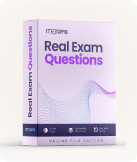Microsoft SC-300 - Microsoft Identity and Access Administrator Exam
Page: 1 / 83
Total 413 questions
Question #1 (Topic: Question Set 1)
You have an Azure Active Directory (Azure AD) tenant that contains the following objects:
✑ A device named Device1
✑ Users named User1, User2, User3, User4, and User5
✑ Groups named Group1, Group2, Group3, Group4, and Group5
The groups are configured as shown in the following table.

To which groups can you assign a Microsoft Office 365 Enterprise E5 license directly?
✑ A device named Device1
✑ Users named User1, User2, User3, User4, and User5
✑ Groups named Group1, Group2, Group3, Group4, and Group5
The groups are configured as shown in the following table.

To which groups can you assign a Microsoft Office 365 Enterprise E5 license directly?
A. Group1 and Group4 only
B. Group1, Group2, Group3, Group4, and Group5
C. Group1 and Group2 only
D. Group1 only
E. Group1, Group2, Group4, and Group5 only
Answer: B
Question #2 (Topic: Question Set 1)
You have a Microsoft Exchange organization that uses an SMTP address space of contoso.com.
Several users use their contoso.com email address for self-service sign-up to Azure Active Directory (Azure AD).
You gain global administrator privileges to the Azure AD tenant that contains the self-signed users.
You need to prevent the users from creating user accounts in the contoso.com Azure AD tenant for self-service sign-up to Microsoft 365 services.
Which PowerShell cmdlet should you run?
Several users use their contoso.com email address for self-service sign-up to Azure Active Directory (Azure AD).
You gain global administrator privileges to the Azure AD tenant that contains the self-signed users.
You need to prevent the users from creating user accounts in the contoso.com Azure AD tenant for self-service sign-up to Microsoft 365 services.
Which PowerShell cmdlet should you run?
A. Set-MsolCompanySettings
B. Set-MsolDomainFederationSettings
C. Update-MsolfederatedDomain
D. Set-MsolDomain
Answer: A
Question #3 (Topic: Question Set 1)
You have a Microsoft 365 tenant that uses the domain named fabrikam.com. The Guest invite settings for Azure Active Directory (Azure AD) are configured as
shown in the exhibit. (Click the Exhibit tab.)

A user named [email protected] shares a Microsoft SharePoint Online document library to the users shown in the following table.

Which users will be emailed a passcode?
shown in the exhibit. (Click the Exhibit tab.)

A user named [email protected] shares a Microsoft SharePoint Online document library to the users shown in the following table.

Which users will be emailed a passcode?
A. User2 only
B. User1 only
C. User1 and User2 only
D. User1, User2, and User3
Answer: B
Question #4 (Topic: Question Set 1)
You have 2,500 users who are assigned Microsoft Office 365 Enterprise E3 licenses. The licenses are assigned to individual users.
From the Groups blade in the Azure Active Directory admin center, you assign Microsoft 365 Enterprise E5 licenses to the users.
You need to remove the Office 365 Enterprise E3 licenses from the users by using the least amount of administrative effort.
What should you use?
From the Groups blade in the Azure Active Directory admin center, you assign Microsoft 365 Enterprise E5 licenses to the users.
You need to remove the Office 365 Enterprise E3 licenses from the users by using the least amount of administrative effort.
What should you use?
A. the Identity Governance blade in the Azure Active Directory admin center
B. the Set-AzureAdUser cmdlet
C. the Licenses blade in the Azure Active Directory admin center
D. the Set-WindowsProductKey cmdlet
Answer: C
Question #5 (Topic: Question Set 1)
HOTSPOT
You have a Microsoft 365 tenant named contoso.com.
Guest user access is enabled.
Users are invited to collaborate with contoso.com as shown in the following table.

From the External collaboration settings in the Azure Active Directory admin center, you configure the Collaboration restrictions settings as shown in the following
exhibit.

From a Microsoft SharePoint Online site, a user invites [email protected] to the site.
For each of the following statements, select Yes if the statement is true. Otherwise, select No.
NOTE: Each correct selection is worth one point.
Hot Area:

You have a Microsoft 365 tenant named contoso.com.
Guest user access is enabled.
Users are invited to collaborate with contoso.com as shown in the following table.

From the External collaboration settings in the Azure Active Directory admin center, you configure the Collaboration restrictions settings as shown in the following
exhibit.

From a Microsoft SharePoint Online site, a user invites [email protected] to the site.
For each of the following statements, select Yes if the statement is true. Otherwise, select No.
NOTE: Each correct selection is worth one point.
Hot Area:

Answer: 

